Story
Waverley members cherish a historical impact on amateur golf and an extraordinary social impact on the lives of its member families. Golf is clearly why the Club began and continues to be its focal point of existence. Social enjoyment with opportunities for camaraderie supporting the golf experience remains the mission of the supporting campus. As you travel the half mile drive down Waverly Drive towards the clubhouse, the hustle and bustle of the outside world falls away. With the golf course on your right, you follow the drive until you enter the clubhouse campus.
With the historic Field House on your left and the clubhouse directly in front of you, it is easy to envision what golf may have been like 100 years ago. Elegant graciousness defines the feel for the structures that support the experience. Crossing into the parking lot it is impossible to not notice the expansive practice facilities. This is unusual for country clubs pre-turn of the century. As practice was not part of the game early on, large practice facilities are not usually found at historic golf facilities. For ours we have past polo players to thank for creating a polo field that today serves as one of the northwest’s finest practice facilities. Hence the distinctive name for Waverley’s Pro Shop ~ the Field House.
A common theme among America’s finest golf and country clubs is member knowledge of the institution’s history and the respect shown for their traditions. Waverley’s rich history is visible in displays throughout the Club. Members have the ongoing responsibility to record and honor the history and traditions of our Club. Please click the links below to learn more about the impressive history of Waverley...
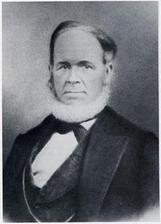
Henderson Luelling began his trip West in 1847, a journey that would take him and his family across the Great Plains and Rocky Mountains. Their wagon train contained several hundred fruit trees. They endured numerous hardships, but were driven by Luelling's desire to grow fruit and nursery stock in Oregon. Lot Whitcomb, captain of the wagon train that brought them to Oregon, already owned the property along the Willamette River that is now the City of Milwaukie. In 1848, Henderson Luelling paid $500 to buy the land immediately north of the Whitcomb property from a Mr. Wilson. On February 5, the Luelling family moved onto what is now the Waverley Country Club property
To prepare the land for their orchard, they first had to clear it. During the spring—with axes and fire as their primary tools—they worked from four in the morning until ten at night and eventually cleared five acres. About 350 trees (out of the 700 estimated to have begun the wagon crossing) had survived the trip, and there were seeds also to plant for root stocks. Among the apple trees to survive were Gravenstein, White and Blue Pearman, Red Astrachan, Winesap, Baldwin, Gloria Mundi, Red Cheeked Pippin and a few others. Fall Butter, Winter Nellis and Seckle Pears, a variety of cherries, peaches, grapes and plums, and a single prune. This orchard was the first of its type west of the Rocky Mountains and the first known orchard where grafting occurred. It was located in the area where the Waverley practice range can be found today. To the East of the range a residual collection of old fruit trees still remains.
Remnants of these orchards can also be seen in the pear trees left of the 10th green. In a letter written by George H. Himes, Assistant Secretary and Curator of the Oregon Historical Society to W.M Whidden, Waverley Secretary in 1910, Mr. Himes requested Waverley to provide a plot of land to mark forever the location of the first grafted fruit trees west of the Rocky Mountains. It is believed the Harry and David fruit tree line began from the Luelling's original fruit stock. Mr. Himes stated at the end of his letter, "There are many historic spots in Oregon which ought to be marked, but none more than this." Waverley's response was not found in historic documentation. Since the monument does not exist, it is presumed that Waverley politely declined this request.
Arboreal Ambitions Branch into an Empire Bearing Fruit
The Sunday Oregonian – August 24, 2003
To others along the way, Henderson Luelling's 1847 trip west perhaps seemed like the Oregon Trail equivalent of carrying coal to Newcastle.
Nobody until Luelling thought to bring a wagonload of trees to America's latest Eden, for obvious reasons: Oregon teemed with trees of seemingly infinite variety, shapes and sizes. But Luelling knew from experience the kind of trees Oregon lacked. Besides, like many other Easteners, he was afflicted with Oregon fever.
'From my earliest recollection, my father was an enthusiastic admirer of Oregon as represented in the accounts of the travels and experiences of Lewis and Clark, and the reports of the emigrants of 1834-44 who wrote to the papers of the western states,' Luelling's son Alfred later recalled.
In 1845-46, Luelling sold off his holdings near Salem, in Lee County, Iowa in preparation for the trip west. In 1847, he packed his wife, Elizabeth, and their eight children and his future into four wagons, and the journey began.
'Two boxes that would fit into the bed of a large wagon were built and filled with compost of charcoal and earth, a combination that Henderson had found would hold water better than earth alone.' Thomas C. McClintock wrote in the June 1967 edition of the Oregon Historical Quarterly. 'In these boxes were planted about 700 grafted trees, including apple, pear, quince, plum, cherry, black walnut and shell-bark hickory nut, plus a few grape vines and gooseberry and currant bushes'."
1894
A. T. Huggins, S. Graham Bowley, Joseph Pebbles and David Norris brought the game of golf to Portland by laying out a nine-hole course in the Piedmont District.
1896
In April, Huggins and Bowley gathered with 23 other golf enthusiasts to form a club consisting of a level course of nine holes in the Portland's Waverly-Richmond district. Waverly Golf Club was born. It became one of the oldest country clubs in the United States and the oldest continuously operated golf course west of the Mississippi River. The course layout was a task originally assumed by members. Later professional help was enlisted. Within two years they group had outgrown the modest course. Members, who paid a $1.00 entrance fee and $.25 monthly dues, decided to move the golf club to a better location.
Robert Livingstone: Waverley's First President
Please click to view Past Board Presidents | 1896 - Present
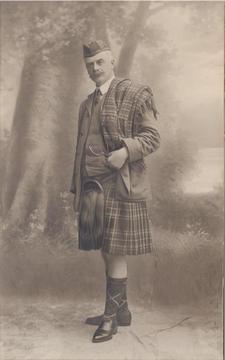
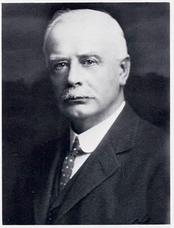
On a rain swept Saturday in April 1896, Waverley Country Club was founded at the office of Robert Livingstone, thus becoming one of the oldest country clubs in the United States and the second oldest regulation golf course West of the Mississippi. Robert Livingstone was duly elected Waverley's first President at a meeting of the founding members. Those charter members included Robert Livingstone, Robert Miller, Walter Burns, William MacMaster, Herbert C. Cambell, W.J. Honeyman, William R. McKenzie, J.I. Dunlap, S. Graham Bowley, W.J. Curtis and Charles E. Swigert. As the "Oregonian" mentions, most of the first members of Waverley were old country Scots and English who had played golf before coming to the Northwest.
The Waverly Golf Club came into being that day at Mr. Livingstone's office. Originally known as The Club and then Portland Golf Club, it eventually gained the name Waverly. The "Oregonian" had called the club Portland Golf Club up to October 17, 1896 when the headline in that day's edition stated "Handicap Tournament Begins at Waverly Links." This name appealed to the Scots since it is the name of Sir Walter Scott's famous historical novels, the first of which is entitled "Waverley". Interestingly, in the novel, Mr. Waverley is an Englishman. Later the spelling was changed to Waverley.
1897 Waverley's Blyth Tournament
Please click to view Past Blyth Champions | 1897 - Present
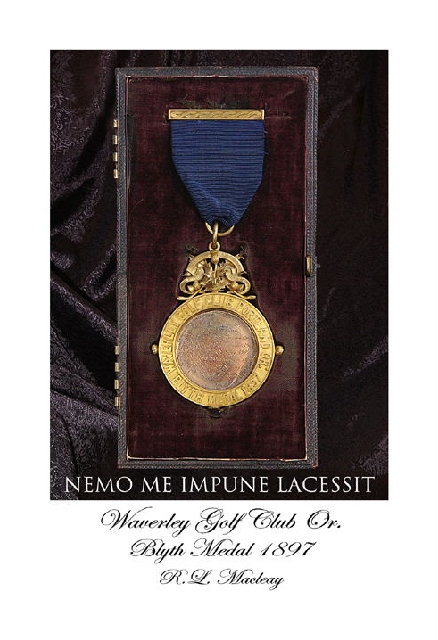
Historical Significance
Waverley's Blyth is the oldest amateur tournament west of the Mississippi River. It was first played on May 1, 1897 between members of Waverley Country Club and their guests from Washington and Victoria, British Columbia. This international match predates the May 21, 1898 tournament between Royal Montréal Golf Club and the Country Club at Brookline, Massachusetts by one year and twenty days. The Massachusetts match was previously thought by the USGA to be the first international match in the United States.
The Blyth Medal
First awarded on May 1, 1897, the historic Blyth medal is one of the earliest known golf medals or trophies in the United States, and is possibly the oldest. The original medal is on display in Waverley's history museum. The original was struck in Scotland and was presented to the club sometime after the first tournament by Percy Blyth's father, Edward Blyth of North Berwick Scotland. Inscribed on the medal are the Latin words "Nemo Me Impune Lacessit". Translated, it means "no one provokes me with impunity." The phrase dates back to 809 AD to the Most Ancient and Most Noble Order of the Thistle and represented the highest honor in Scotland. Legend has it this order was founded when Achaius, King of Scots, formed an alliance with the Emperor Charlemagne. On three occasions the Scottish government had to get permission from the Order of the Thistle to print "Nemo Me Impune Lacessit" on the Scottish pound. How this phrase was chosen for Waverley's Blyth medal remains a mystery.
The Blyth Jacket
A highlight of the Blyth Tournament is the annual awarding of the green jacket to the new champion. This inevitably prompts comparison with the green jacket at Augusta National Golf Club. Augusta's green jacket dates back to 1937. That year, members of the club wore green jackets during the tournament so that fans in attendance could easily identify them if they needed to ask questions. In 1949, Augusta members began the tradition of awarding the green jacket to the winner of the Masters Tournament. That year, Sam Snead won the Masters and became the first non-member to receive the green jacket. That tradition continues today.
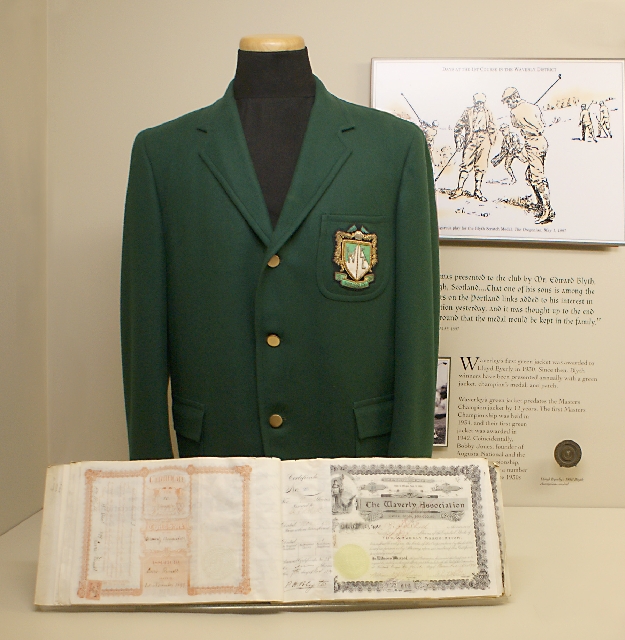
Waverley presented the first Blyth Champion's green jacket in 1930. Interestingly, Bobby Jones was close friends with a number of Waverley members in the late 1920s and visited Waverley on several occasions to play with his friends including Sissy Green and E.E. "General" Johnson. Jones also spent a significant amount of time with Oscar "Doc" Willing and Don Moe as members of the 1930 Walker Cup Team. Following a lengthy voyage to England and after playing numerous practice rounds as a team, Captain Jones chose Waverley's Doc Willing as his Walker Cup playing partner. Willing's strong performance contributed significantly to the U.S. victory that year. Waverley member Don Moe traveled with Jones on every stop along the way to his historic Grand Slam and kept a wonderful journal of this journey. Portions of his journal can be read in the history display on Don Moe located in the Men's Locker Room. On the day of Bobby Jones ticker-tape parade in New York, Don Moe was riding in the car behind Bobby Jones with Jones' mother and father. Waverley's History Committee has collected photographs of the Walker Cup team as well as photos of Jones with Chandler Egan and Lawson Little who were also close friends. Recently the Club discovered a book on the golf swing highlighting Mr. Jones and Waverley member Frank Dolp. It is suspected Jones may have got the idea for the Augusta jacket from his longtime association with Waverley and his friends who were members.
1898
Waverly Golf Club was relocated along the East bank of the Willamette River, between Sellwood and Milwaukie, on what was formerly the Luelling orchard. This orchard was the site of the earliest grafted fruit orchard west of the Mississippi River. At that time the course went by two names, the "Riverside Links" or the "Portland Golf Club". Articles appearing in The Oregonian newspaper referred to it simply as "The Links". At first, nine holes were designed. Soon thereafter it was expanded to eighteen.
1899
A clubhouse, rare for golf courses at the time, was erected and included one of the first Pro Shops in the United States. This modest facility was located about 35 feet south of Ochoco Street between 10th and 11th streets near what today is the north edge of the property. The practice putting green was located where the 15th green is today. By 1902, the clubhouse added a dancehall, lounge and grill and a women's locker room on the second floor. This early clubhouse made it possible for the growing membership to hold social events, such as dinner dances, holiday parties, teas and luncheons for members and their guests.
1900
Waverley’s rich history of supporting amateur golf began in 1900 when it hosting the second PNGA Championship, an event won by Waverley member Patrick B. Gifford.
William MacMaster: Waverley Founder & Early Leader
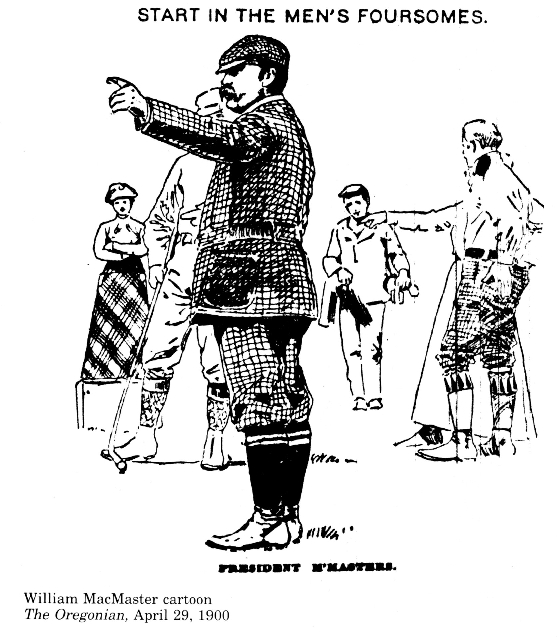
Born in Silverdale, England 1858 of Scottish Parents and was educated in Scotland. In 1880 he was sent to Iowa by the Dundee Land Company to plat and sell 10,000 acres of land; he was then sent to Portland to take care of his firm’s large holdings here in the Pacific Northwest. In 1889 he returned to Edinburgh to marry Annie Jeffrie Fender in 1890, the couple then returned to Portland
He joined other Scottish golfers on a nine hole links created in the neighborhood known now and then as “Waverly” in 1896. The property is north of Powell Boulevard around 27th street. They played at the Waverly course for about three years before moving the links to the current location of Waverley Country Club. Throughout the early 1900’s MacMasters had been the President of Waverley Country Club (1900, 1903, 1908-1913, Vice President in 1920, and President again in 1921).
1901
Waverley hosts Oregon’s first State Amateur Championship. Waverley members Roderick Maccleay and Carrie Flanders win the Men’s And Women’s Championship title. 1901 was also the year when Waverley hosted its 1st annual Caddy Tournament.
Ardgour Rail Line
Early Streetcar Service to Waverley
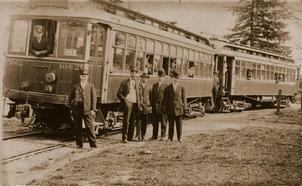
From the early 1900’s until the late 1950’s Waverley was served by Portland’s interurban car line, the Ardgour, named after the William MacMaster property. The name of the MacMaster estate was derived from a town and district, Ardgour, in Argyll, Scotland located between Loch Shiel and Loch Linnhe. William MacMaster, Waverley President in 1900 and 1903, was a manager of many Scottish financial companies. The original line had four stops along the Waverley Country Club property. There was a station named “Golf Links” but usually called “Golf Junction” on the west side of the car line near the present 12th green. Starting in 1909 there was a stop at the “Ardgour” on the northwest corner of William MacMaster’s estate, where the road turns south towards the clubhouse near the 7th tee. This served as the neighborhood stop. The third stop, “Over Links” remains today Waverley’s Junior Clubhouse. The fourth stop at the south end of the polo field was named “Knights” after the owners of the land south of Waverley. Each station was marked with a sign and the operator would call out the names as they approached.
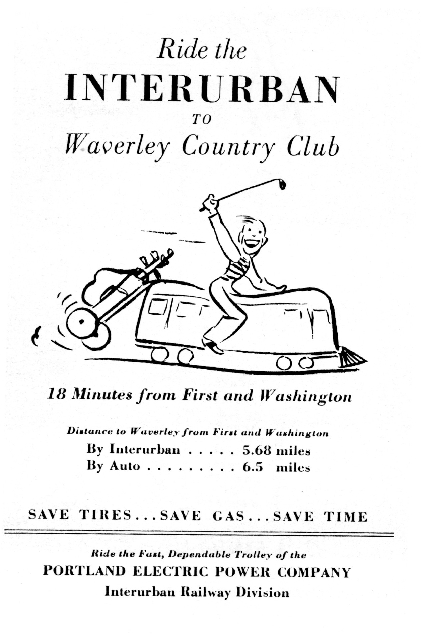
1902
The original clubhouse was renovated with the addition of a dance hall, lounge and grille.
1903
On May 3rd, Rod Macleay and Mrs. Frederick Warner won the 1903 Spring Meet Oregon State Amateur Championship at Waverley.
1904
The list of founding members is expanded to include K.K. Baxter, C.C. Robinson, H.E. Judge, A.H. Birrell, James McI. Wood, A.T. Huggins, Stewart B. Linthicum, P.W. Lindley and Lewis Russell.
William Junor: Waverley's First Golf Course Superintendent
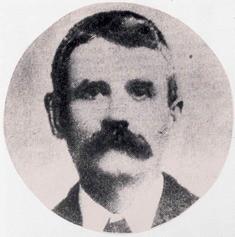
William Junor, head of a golfing family, came to America in 1905. Along with his wife and ten children, the Junors traveled from their home in Aberdeenshire, Scotland to Portland. His brother George had come to America and to Waverley in 1904. William, after his arrival, was hired by Waverley and became Waverley’s first official greenkeeper. His sons Donald and, later, Hugh Junor became Waverley’s greenkeepers in succession until Hugh retired in 1949.After leaving Waverley, Donald became the greenkeeper at Portland Golf Club, where his son Harvey, who retired in 1985, succeeded him. George Junor is credited with building the Tualatin Country Club golf course and was greenkeeper at Alderwood. John Junor, after serving as Waverley’s first official caddy master, went on to become the head golf professional at Eastmoreland, Tualatin Country Club and Portland Golf Club.
The July 19, 1942 “Oregon Journal” stated of William Junor “He started in the days when a band of sheep used to mow the greens and fairways. Shortly thereafter, a horse was purchased to mow the fairways and haul water with which to sprinkle the greens.” Remembered were the days when Waverley members rode horse and carriage across the old Sellwood Ferry. Part of the duties of the Junor Family was to care for the horses while members enjoyed an afternoon on the links. Dedicated to golf and service, the Junor Family exemplified the tradition of a great golfing family. The Waverley-Junor relationship positively impacted the success of other private clubs and golf courses across the region.
William Junor died February 17th, 1916. “A long line of horse drawn vehicles made up the funeral cortege of William Junor. He had frequently expressed the desire that automobiles not be used at his funeral. He is buried in Milwaukie Cemetery, which is adjacent to the golf course.” – Sellwood Bee
1905
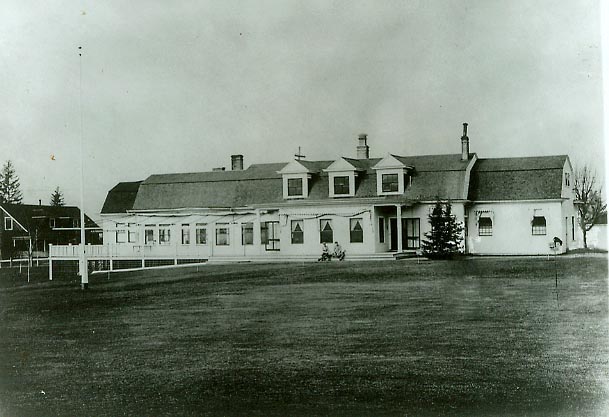
1909
William Howard Taft was the first golf-loving president. Even though he was a very large man, he often played and played well. “The beauty of golf,” Taft once said, “is that you cannot play if you permit yourself to think of anything else.” Taft’s predecessor, Teddy Roosevelt, had advised him against participating in such a “sissy” sport, even though he too played some golf. Taft’s golf games were well covered by the nation’s press. The public learned that Taft was fond of yelling at his ball for misbehaving and that the 300-pound president was a poor putter. On October 2 1909, Taft arrives by train from San Francisco. He is hosted by Waverley for a round of golf that afternoon.
1912
The Southern portion of Waverley property is redesigned by the Olmsted Brothers out of Brookline, Massachusetts. On December 13th, the Waverley Board accepts a trophy from C.H. Davis, Jr. to serve as the perpetual trophy for the Seattle—Waverley team matches.
All business and financing of the Golf Club had been managed by the Waverly Association. In 1912, it disbanded and ordered the Secretary to register (with the city of Portland) the newly organized club—known from that day forward as the Waverley Country Club. To differentiate it from Waverly Golf Club, the same name could not be used so an ‘e’ was added, and the spelling thereafter became “Waverley”.
The acreage was surveyed in preparation for rerouting the course to allow for a new driveway, the construction and relocation of a new clubhouse and pro shop, the polo field, four tennis courts, stables and a boat dock. Later, a swimming pool and dressing rooms were added.
The polo field was put to immediate use. Waverley fielded both a Red and a Blue team. They held matches between the Ft. Vancouver barracks teams along with other Washington and Idaho clubs. Reporting on the early matches, The Oregonian indicated the Waverley teams were not easily beaten.
1911
The list of founding members is again expanded to include William Mackintosh, James D. Hart, Hugh Wallace, C.W. Hallamore, Peter Kerr and Thomas Kerr.
1912
FIRST INTERSTATE MAIL DELIVERY LANDS AT WAVERLEY
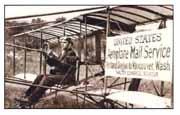
The Waverley polo field was the site of a unique and historic event in August of 1912 when aviator Walter Edwards completed the first interstate mail delivery in a Curtiss Pusher type biplane. The flight departed from the Waverley polo field, flew over the course, up the Willamette River, over Portland, across the Columbia River and landed at the field at Fort Vancouver. This two-day historic event delivered over 5,000 pieces of Airmail, including letters to U.S. Presidents William Taft, Teddy Roosevelt and Woodrow Wilson as well as the Postmaster General. Letters were postmarked U.S. Aeroplane Mail Service. The temporary Postal Station at Waverley, called Portland Aviator Station No. 1, was the first interstate airmail postal station in the United States.
Frederick Law Olmsted & Frederick Law Olmsted, Jr.
Please click to view The Olmsted Legacy | The 40 Mile Loop
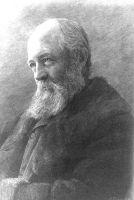
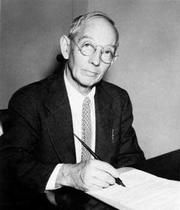
- Born: April 26, 1822 – Hartford, Connecticut
- Died: August 28, 1903 – Belmont, Massachusetts
- Major Projects:
- Central Park (New York City)
- The Biltmore Estate (Asheville, NC)
- University of California (Berkeley, CA)
- Stanford University (Palo Alto, CA)
- Landscaping surrounding the U.S. Capitol Building (Washington, D.C.)
Olmsted has been called "the founder of American landscape architecture and the nation's foremost park-maker" by the National Park Service. Olmsted was born into a well-to-do family and dabbled in various professions until being appointed superintendent of Central Park during the park's design phase in 1857. With fellow designer Calvert Vaux, he designed the 843-acre park and oversaw its early development. Central Park was a tremendous success, and established the themes which are now closely associated with Olmsted, especially his use of hills, trees and curved walkways to give visitors intriguing vistas and a feeling of serene isolation from the city. Olmsted and Vaux later formed a partnership and designed Brooklyn's Prospect Park as well as major parks in Buffalo, Louisville and elsewhere. Olmsted founded his own firm in 1883 in Brookline, Massachusetts and conceived Boston's "Emerald Necklace" of green spaces. Among his many other projects, he played a major role in the 1870s redesign of the U.S. Capitol grounds and in the design of the 1893 Chicago World's Fair. Olmstead retired in 1895 and his firm was taken over by his sons, Frederick Law Olmsted Jr. and John Charles Olmsted.
Discussions of a new clubhouse stirred controversy. The Olmsted Brothers had previously worked in Portland on the design of the 1905 Lewis & Clark Exposition. They were retained by the Board. The firm had impeccable credentials, having designed numerous iconic sites, including Central Park in New York, the mall in Washington, D.C. and the White House grounds. Frederick Law Jr. was the designer of the Jefferson Memorial in Washington, D.C. The Olmsted Brothers designed the new road and landscaping surrounding the Waverley property and clubhouse.
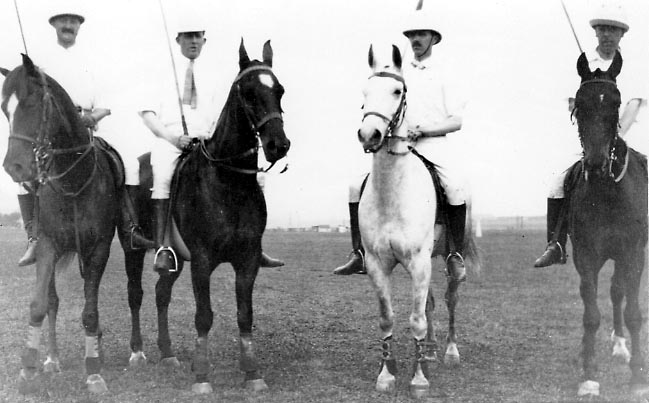
Those designs, which included recommendations for the clubhouse location, met with opposition from Waverley’s polo playing members. Polo enthusiasts, including team captain Gordon Voorhies, wanted the clubhouse to be located south of the current location so members could view matches directly from the clubhouse. The Olmstead Brothers recommended a location somewhat North of where the clubhouse is located today on a slight rise of land that would give members a greater view of the course, north and south, as well as better river vistas. A compromise was reached that sited the building at the north edge of what was then the polo field. Today, the old polo field is the site of Waverley’s driving range. The original pro shop was called the “field house”, a reference which continued when the new pro shop was built. Memorabilia of Waverley’s polo heritage is on display in the field house.
The Portland architectural firm of Whitehouse and Fouiloux were hired to design the new clubhouse. Waverley’s 1912 Board of Directors sought an elegant but understated look. Whitehouse and Fouiloux responded by designing a classic Dutch Colonial Revival building. The building features white shingled siding, gambrel roof, porticos supported by simple Tuscan column, multi-light double hung windows, beveled and leaded glass door elements and a lengthy river view balcony with balustrades. The Olmstead Brothers landscape plan was implemented to support and compliment the architectural design. The cost of the clubhouse was $72,000. An additional $13,500 was contracted to the firm of Davenport of Boston for furnishings. A committee of Waverley women assisted with the internal décor which followed the current style and comfort of the time.
As the clubhouse was being constructed, stables were erected at the south end of the polo field in what is today the south practice range. The cost of the stables was $4,295. An additional $47,000 was spent on the road into the club grounds, tennis courts, lockers, lighting fixtures and architectural fees. The club hired C. C. Colburn to implement the landscape design for a fee of $3,000. Information on the fees paid to Olmstead Brothers cannot be found.
Originally, the men’s locker room was located in the basement of the new clubhouse. It included a bar and men’s lounge with 350 lockers. As it remains today, the women’s locker room was upstairs with lockers and spacious dressing rooms.
Initially, the clubhouse had single and double sleeping rooms for rent by single male members. During World War I, the rented rooms were closed to reduce club expense. Today, the double sleeping rooms accommodate members and guests desiring overnight stays.
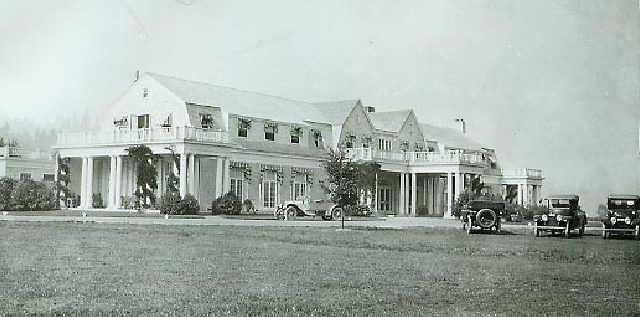
Waverley members celebrated the completion of their clubhouse during the first week of June, 1913. The old clubhouse was the site of a final party, after which some furnishings, crockery and china were moved to the new clubhouse. During the opening week, many parties, luncheons and teas were hosted by members. On Saturday, a polo match was held, pitting Waverley’s Blue and Red Teams against the Vancouver Barracks teams. During this same week, the club hosted the Oregon State Championship Tournament. During this opening week, a putting contest took place each day. The finale was schedule for Saturday, June 7, 1913 when the new clubhouse was celebrated with an opening gala. The Oregonian described the setting: “The left lower wing of the house is furnished from simple yet tasteful chandeliers hung with crystal pendants. The windows are draped with soft old rose taffeta and the floor is nothing short of a dancer’s dream. An alcove off of this forms a perfect setting for an orchestra.”
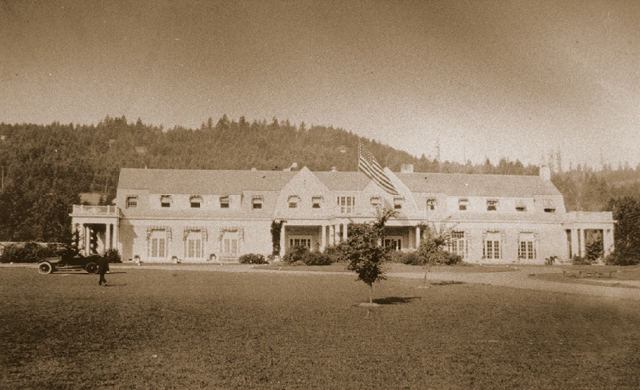
During the week of July 24-29, Waverley hosts Exhibition matches between the Chandler Egan and his Northwestern Golf Team and Chick Evans and his Middle Western Golf Team (source: Oregonian June 21, 1913)
Northwestern Golf Team | Middle Western Golf Team
- H. Chandler Egan – WCC | Charles “Chick” Evans
- Harry Davis – WCC | Warren K. Wood
- Turnbull – WCC Professional | De Vol
- A.V. Macan – Victoria | Ned Sawyer
- J.S. Matterson – Victoria | Harry Legg
- T.S. Lippy – Seattle | Frazier Hale
- A.S. Kerry – Seattle | Phil Stanton
- Jack Neville – Oakland | Fleager
On September 18, 1913 Waverley member Peter Kerr recommended a set of names for the holes of the golf course. The names persist to today, even though characteristic features in some cases have changed:
- “Ardgour”- Ardgour was the name of the MacMaster Estate
- “Railside”- Recognizes the proximity of the interurban railcar line that ran beside the current #7.
- “Trap”- Treacherous bunkers gave rise to this historic name
- “Dogwood”- Recognized the flowering trees that brighten the course each Spring
- “Nobbly”– The Century Dictionary of 1913 defines the word as “to frustrate”.
- “Fountain”– Named for the drinking fountain donated by member Harry Davis who played in the now historic match between Ted Ray and Harry Vardon vs. Harry Davis and Chandler Egan
- “Park”- Comes from “Golf Park”, original name of the Garthwick subdivision
- “Lone Pine”- The Lone Pine on #8 blew down during the Columbus Day storm in 1962
- “Halfway”– Members were either halfway home or halfway to the 19th hole.
- “Cottage” - Cottage referred to the greenskeeper’s house, originally a Cambridge lot
- “Kopjes”– A term used during the Boer War. It meant a hill with a flat top and steep slope.
- “Bunker Hill”– Bunkers, dotting the hillside, awaited an errant drive
- “Waterloo” - Rumored to have been named by an irate golfer
- “Dinky”- Recognized the short length of the hole.
- “Old Home”- Recognized the location of the original clubhouse near what is now the 15th green.
- “Punchbowl”- The original design of this hold gave rise to its historic name
- “River”- Acknowledged the fairway on this hole always ran treacherously close to the banks of the Willamette River.
- “Home”- There is no place like home (one of the Northwest’s most recognizable finishing holes).
- 2nd Hole – 1 bunker and raising back of green
- 3rd hole – three bunkers
- 4th hole – 2 bunkers
- 7th hole – 2 bunkers
- 8th hole – 1 bunker
- 12th hole – 4 bunkers
- 13th hole – 2 bunkers & enlarge 1 old one
- 15th hole – 3 bunkers
- 16th hole – 2 bunkers
- 18th hole – 2 bunkers
The Vardon-Ray Exhibition Match of 1913
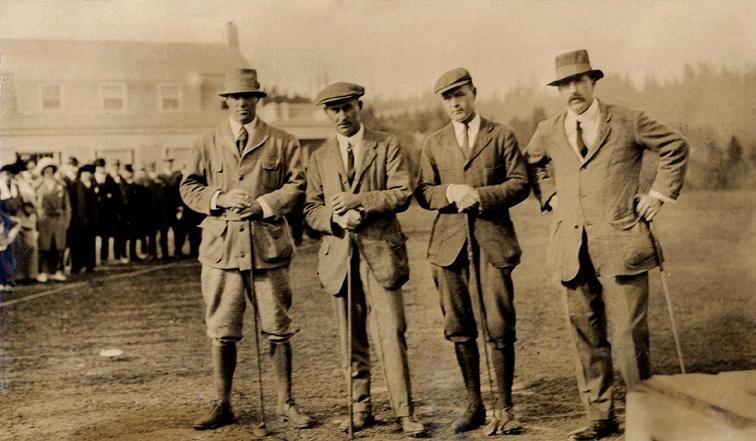
In October of 1913, arguably the two most famous golfers in the world—Harry Vardon and Ted Ray, both from the island of Jersey in Great Britain—played Harry Davis and Chandler Egan in an exhibition match at Waverley. In those days, golf professionals were modestly paid and were generally considered second-class citizens, even in the clubs where they were professionals. To augment their income, Vardon and Ray played a series of exhibition matches in the U.S. during the summer and fall of 1913.
The match at Waverley followed shortly on the heels of the 1913 U.S. Open, played at the Country Club in Brookline, Massachusetts. That match—chronicled in Mark Frost’s book, The Greatest Game Ever Played—was won by 20 year old amateur Francis Ouimet. There was a three-way tie at the end of regulation play. Ouimet defeated Vardon and Ray in an 18-hole playoff on September 20, winning with a score of 72. Vardon was second with 77 and Ray came in third with a 78. It was widely hailed as a stunning upset over the strongly-favored Brits. Ouimet was the first amateur to win the U.S. Open.
This memorable event is commemorated annually by Waverley members who team up for a summer-long match play tournament known as “The Vardon-Ray”.
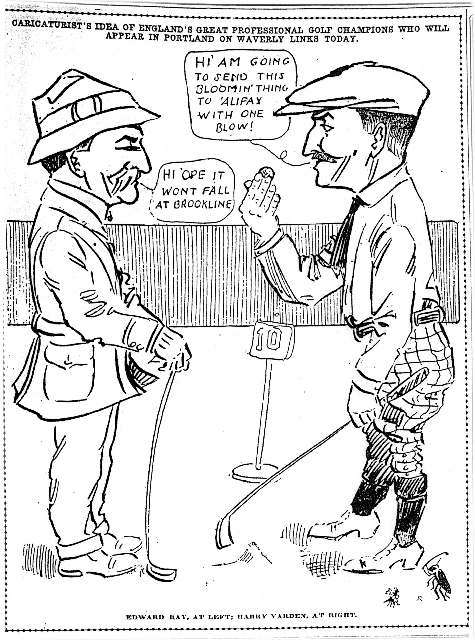
On November 20, 1913 H. Chandler Egan was unanimously elected to Honorary Membership in Waverley Country Club.
1915
With the passage of the Oregon Dry Amendment, Waverley goes “dry”. An account by a member indicates, “It seems to have set a certain feeling of gloom.”
1916
Waverley experiences a caddy strike resulting in a rule that Waverley would employ no caddy over 16 unless they still attended (school).
Individual Waverley members fund major golf course improvement. H. Chandler Egan is hired to install a drinking fountain at the 10th green and construction of 22 bunkers including..
Out of regular funds the bunkers around the 9th green and the 12th green as well as the bunker in front of the 4th green (this bunker on Mr. Egan’s suggestion was partly filled in and made over).
1917
Waverley hosts the PNGA Tournament
Outgoing President W.W. Cotton recommends inexpensive, but warm cottages along the River which would be for rent to members
1918
In September, the Waverley Board announces the dues will be doubled.
1920
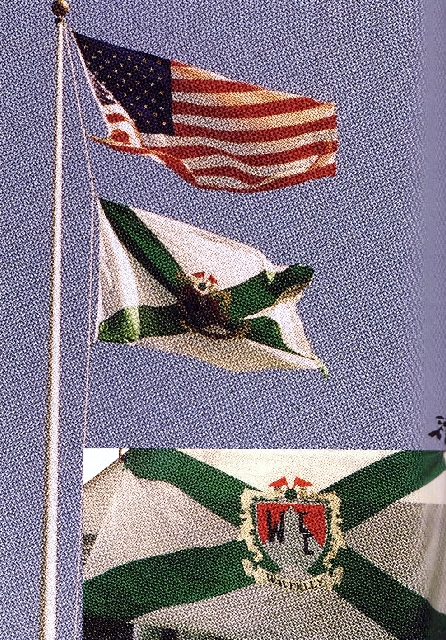
Waverley erects their now historic flagpole on July 3rd, just in time for the Fourth of July celebration.
Board minutes from February 1920 indicate C.H. Davis, Jr. presented the Club with a clock to be placed in the gables of the new field house. The gift was unanimously accepted.
In early July, H. Chandler Egan wins the PNGA Championship held at Vancouver BC. The newspaper accounts indicated, “Again Waverley in the amateur championship proved her supremacy: this event being won by Mr. H. Chandler Egan wearing Waverley colors.”
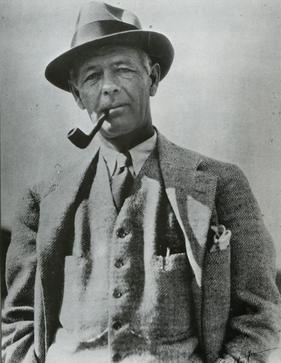
1924
Chandler Egan, Waverley’s golf course architect, designed new greens that were built on 2, 3, 4, 6, 7, 8, 9, 11 and 18 for just over $4,000. Prior to this time greens were merely mowed areas of the fairway.
1927
J. Wilson Johnston from Waverley Country Club wins Oregon’s 1st Junior Golf State Championship.
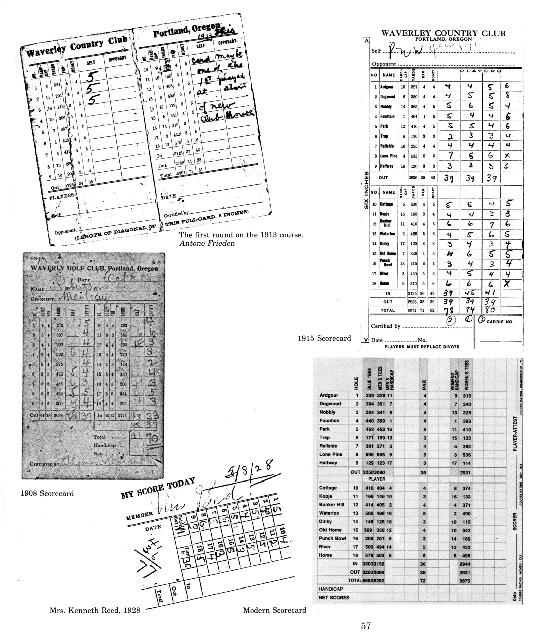
The men’s locker room, card room and bar addition is completed. Most of the clubhouse is also renovated and decorated in Waverley green and white. A long-awaited swimming pool and deck were also added.
Over the years, changes were made to further enhance the building and upgrade the integrity of the structure. Ceiling in the Ballroom and Terrace Room were dropped and acoustical tiles were added. Picture windows replaced the small pained windows allowing for more expansive river views. In recent years, the dropped ceilings were removed, revealing substantial grand cross beams that restored the integrity and beauty of the Whitehouse and Fouiloux vision. Today, Waverley continues to demonstrate a strong commitment to what its members consider a classic design.
1933
Family use of the golf course was permitted for proprietary members for the first time.
1935
First Women’s Board of Governors appointed by the Club Board
1937
Gordon Voorhies granted an honorary membership. The Board stated he was “the Club’s foremost polo player”.
Roderick Macleay granted an honorary membership. The Board stated he was “undoubtedly our earliest quality golfer.”
1943
Seven British naval officers stay at Waverley for the summer in bedrooms located where the women’s showers and powder room are now located. They were in Portland to supervise the outfitting of baby aircraft carriers being built at the Keiser shipyards. Partiers aboard the H.M.S. Trumpeter included several Waverley members.
1943
In November, Waverley hosts golfing exhibition between Byron Nelson and Harold “Jug” McSpaden
1945
Some 32 years after the clubhouse was built, Thomas E. Young, President of the Waverley Board, ceremoniously burned the mortgage over a brass pot on July 22, 1945.
1952
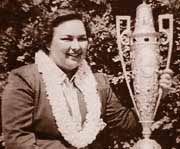
August 28-31, 1952: Waverley Country Club hosts the USGA 52nd Women’s National Amateur Championship. This was Waverley’s first USGA Championship.
Champion: Jackie Pung
1954
In 1954, the clubhouse suffered a night fire in the Ladies lounge. This is the only fire that has damaged the structure. When the men’s locker room was being remodeled in 2007, the construction crews uncovered a previously unknown incident. While removing a lath and plaster wall by the front entrance to the locker room, workers found the studs beneath the plaster were charred by an earlier fire. Apparently the fire lacked sufficient oxygen to spread.
1955
Major improvements are made to the women’s locker room.
1959
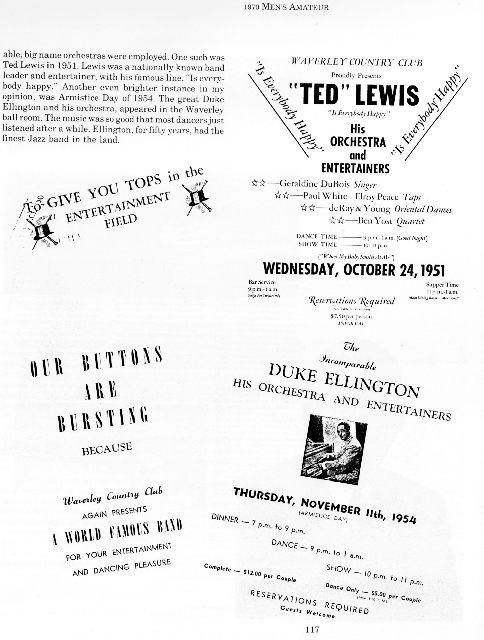
August 10-16, Waverley hosts the 57th Western Golf Association Amateur.
1962
Pacific Northwest weather has made its mark on Waverley. One of the most severe storms ever recorded was the “Columbus Day Storm” in October of 1962. This storm destroyed many of the old trees on the course. The most noted loss was the “lone pine” on Waverley’s eighth hole.
1964
Waverley Country Club hosts the USGA Men’s Senior National Amateur Championship. This is Waverley’s second USGA Championship.
Champion: William Higgins
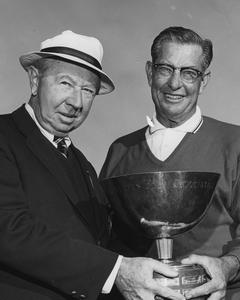
1969
In January, Dorothy Campbell leaves PGC and joins Waverley. Between 1969 and 1986 she won 10 women’s club championships.
1970
Waverley Country Club hosts the USGA’s Men’s National Amateur Championship. This was Waverley’s third USGA Championship.
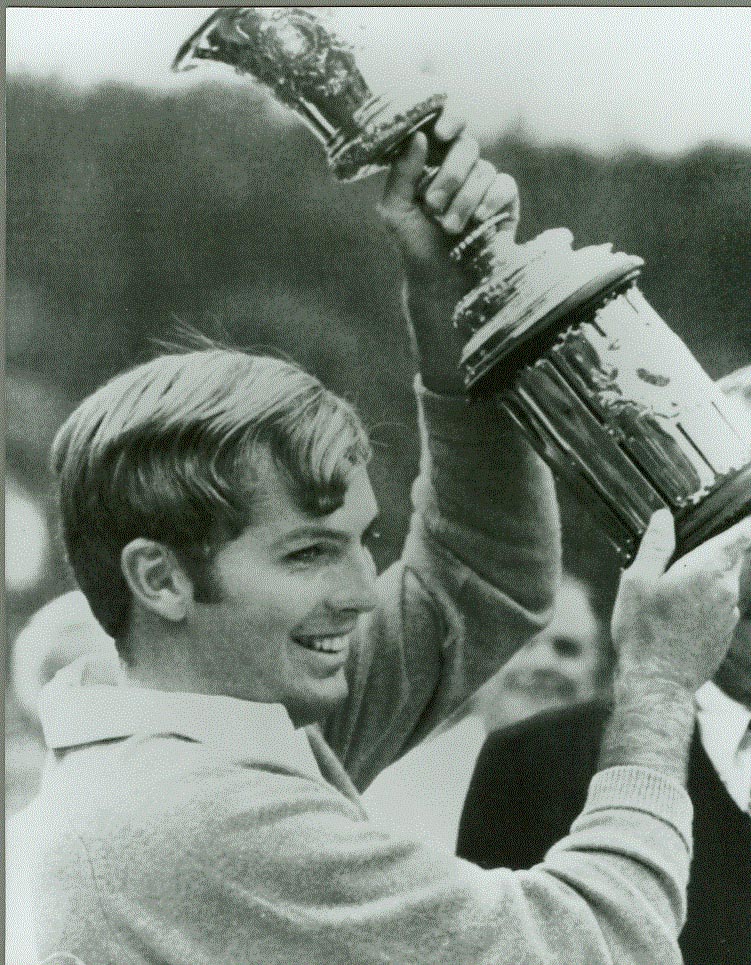
1971
Waverley pounces on the opportunity to buy the railroad right of way running beside the 7th and 12th holes. The track was removed almost overnight before the protestors can rally their troops.
1975
In September, Grant and Marty Anderson have consecutive holes-in-one on the 14th, the first husband and wife in the country to ace a hole while playing in the same group.
1981
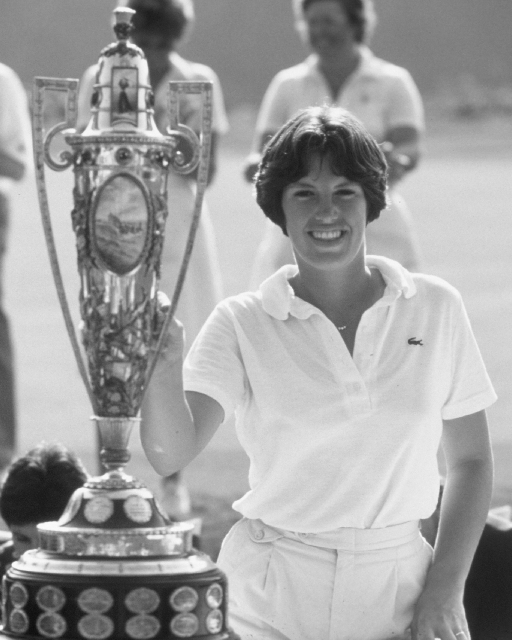
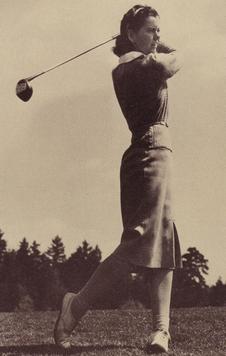
August 10-15, 1981: Waverley Country Club hosts the 81st Annual Women’s Amateur Championship. This was Waverley’s fourth USGA Championship.
Champion: Julie Inkster
1987
Waverley’s Marian McDougall Herron, 10-time Women’s Club Champion, is inducted into the Oregon Sports Hall of Fame.
1988
Clarke Miller, Chairman of the Green Committee, was given permission to plant 25 flowering plumbs along the Polo Field and in the grass strips between parking areas.
1993
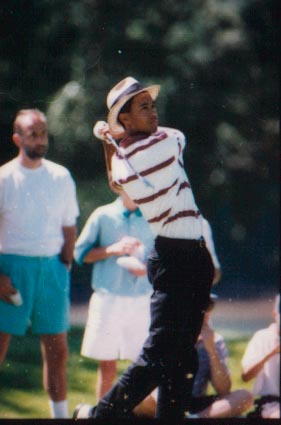
July 27-31, 1993: Waverley Country Club hosts the 46th Annual U.S. Junior Amateur Championship. This was Waverley's fifth USGA Championship. The champion is Eldrick "Tiger" Woods. Many who turned out to get a first look at 17 year old phenom Tiger Woods also enjoyed the play of a 14-year old 95 lb young man named Charles Howell.
Champion: Tiger Woods
1994
In February, John Wells leaves the snowdrifts of the Country Club in Brookline and joins Waverley as the 14th Head Professional in 95 years.
1996
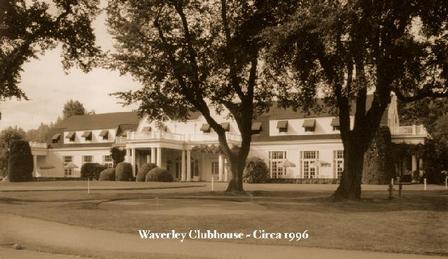
Because of its location on the banks of the Willamette, flooding can periodically be a problem for the fairways and greens located next to the river. The most significant flood occurred in 1996. Members and staff successfully worked together to sandbag the building perimeter to safeguard the clubhouse from water damage.
1997
On April 26, Waverley celebrates its Centennial Closing Celebration and buries Time Capsule.
2000
August 9-12, 2000: Waverley Country Club hosts the 100th Annual USGA National Women’s Amateur Championship. This centennial event was Waverley’s sixth USGA Championship. Champion: Marcy Newton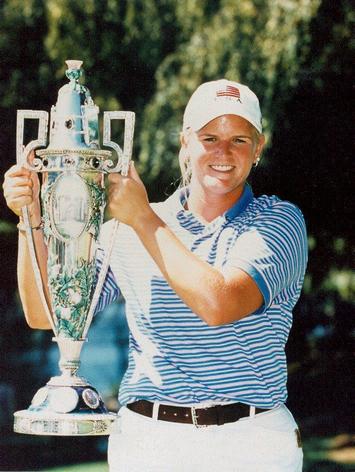
2001-2012
Golf Course Restoration by Gil Hanse
Golf Course Centennial Gala
2013
On June 8, 2013, Waverley members celebrated the 100th anniversary of their clubhouse with a gala that highlighted its rich history.
2017